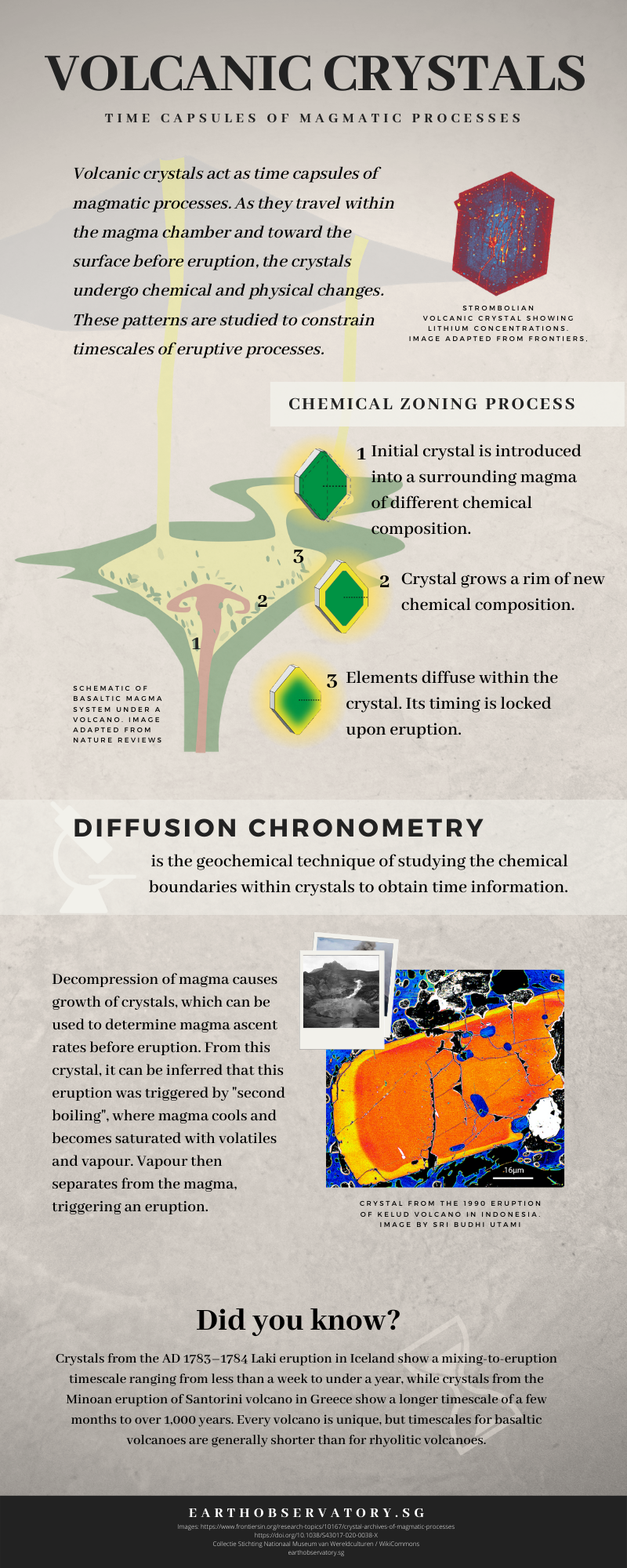“When would be the next eruption?” is a recurring question posed to volcanologists. And it is a challenging one to answer as many processes over different timescales are at play before an eruption.
Published in Nature Reviews on 1 April 2020, a new study led by Associate Professor Fidel Costa, the Interim Director and a Principal Investigator at the Earth Observatory of Singapore, reviews how the Diffusion Chronometry method can reliably determine the timescales of volcanic processes prior to eruption.
This method looks at the changes in the concentration of chemical elements within crystals sampled from erupted products to determine the timing of volcanic process.

Several methods exist to constrain the timing of volcanic processes. But diffusion chronometry is the only one that can reliably constrain magmatic processes with timescales from hours to centuries in a wide range of volcanic settings.
The study gathers data from more than 25 volcanoes from all around the world and shows that the timescale between magma mixing in the magma chamber and the eruption is shorter for basaltic volcanoes (e.g. Laki in Iceland) than for rhyolitic volcanoes (e.g. Toba in Indonesia).
The sheer volume of data for analysis proved to be the most challenging aspect of this study. “It was hard to summarise all available information of time scales that lead to eruptions in a concise manner and for an audience with a wide range of backgrounds such as Nature Reviews,” said Assoc Prof Costa.
But it was well worth the effort for the findings showed good agreement between timescales from diffusion chronometry, monitoring data, and petrological studies.
These are only a few of the outcomes of this comprehensive review study which presents a compelling case for diffusion chronometry results to be included in volcanic hazards assessment.
According to Assoc Prof Costa, “This study identifies knowledge gaps in the field that will hopefully be useful for the community to decide how to push the research frontiers further ahead.”